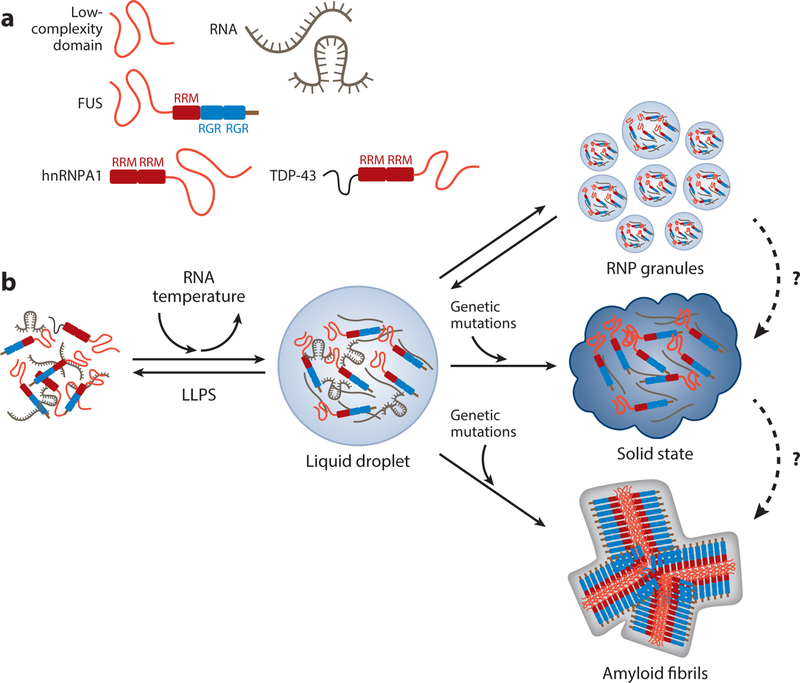Figure 3.
Liquid–liquid phase separation (LLPS) governs the formation of membraneless organelles. (a) Schematic representing the low-complexity (LC) domain, RNA (with relaxed and stem-loop configurations), and the RNA binding proteins FUS, TDP-43, and hnRNPA1, each containing an LC domain, RNA recognition domain, and arginine-glycine-rich motifs. (b) LLPS promotes the formation of membraneless liquid droplets or hydrogels, a process which can be facilitated by the presence of RNA and low temperatures. The metastable property of liquid droplets is critical for the assembly and disassembly of many membraneless organelles, such as RNA granules, stress granules, the nucleolus, and nuclear speckles. Under pathological conditions, liquid droplets can transition into a solid-state structure or form amyloid fibrils, which are more stable and whose formation is likely irreversible.

